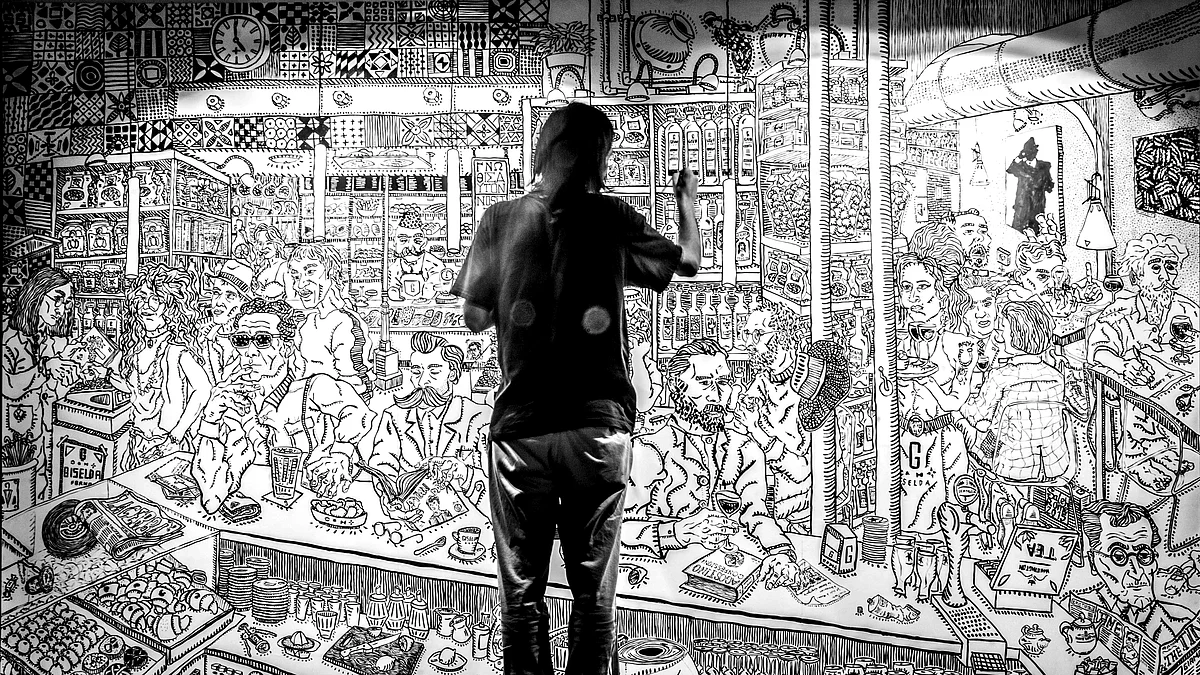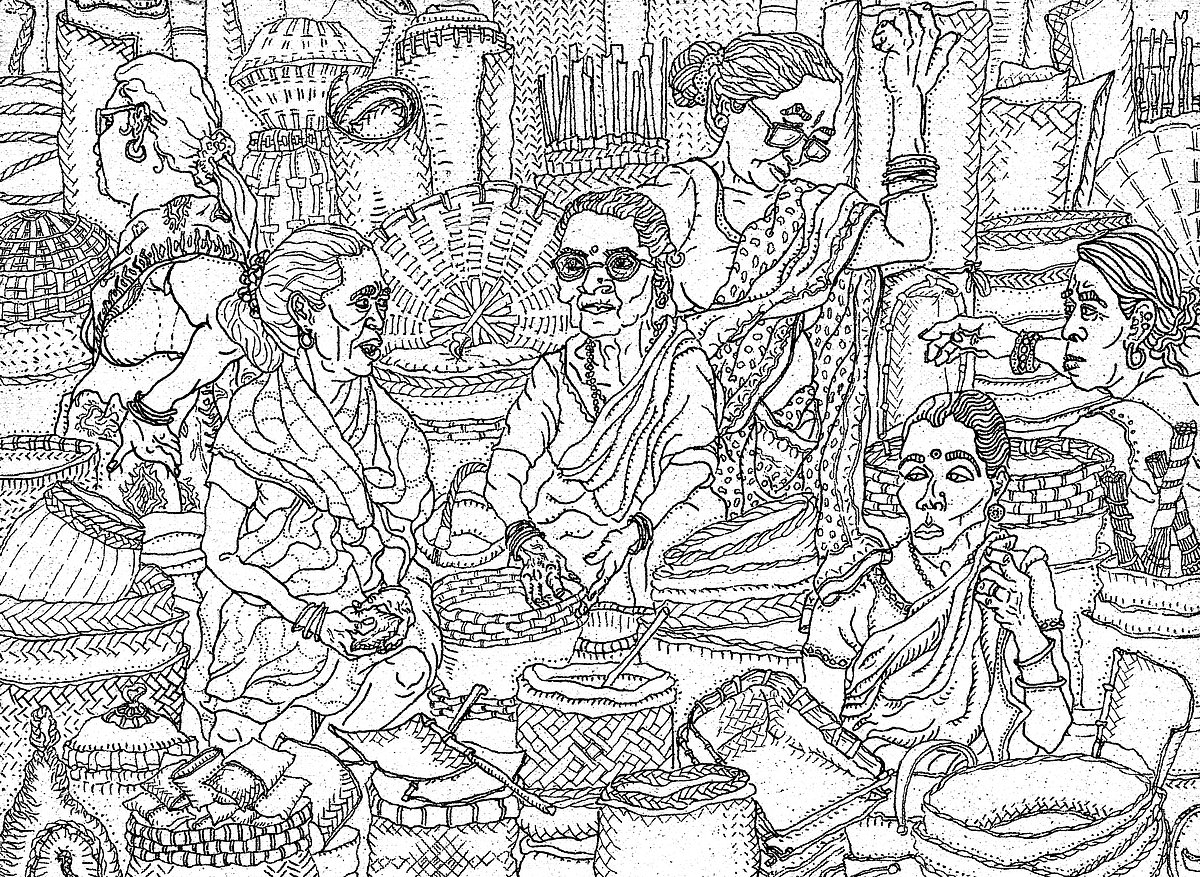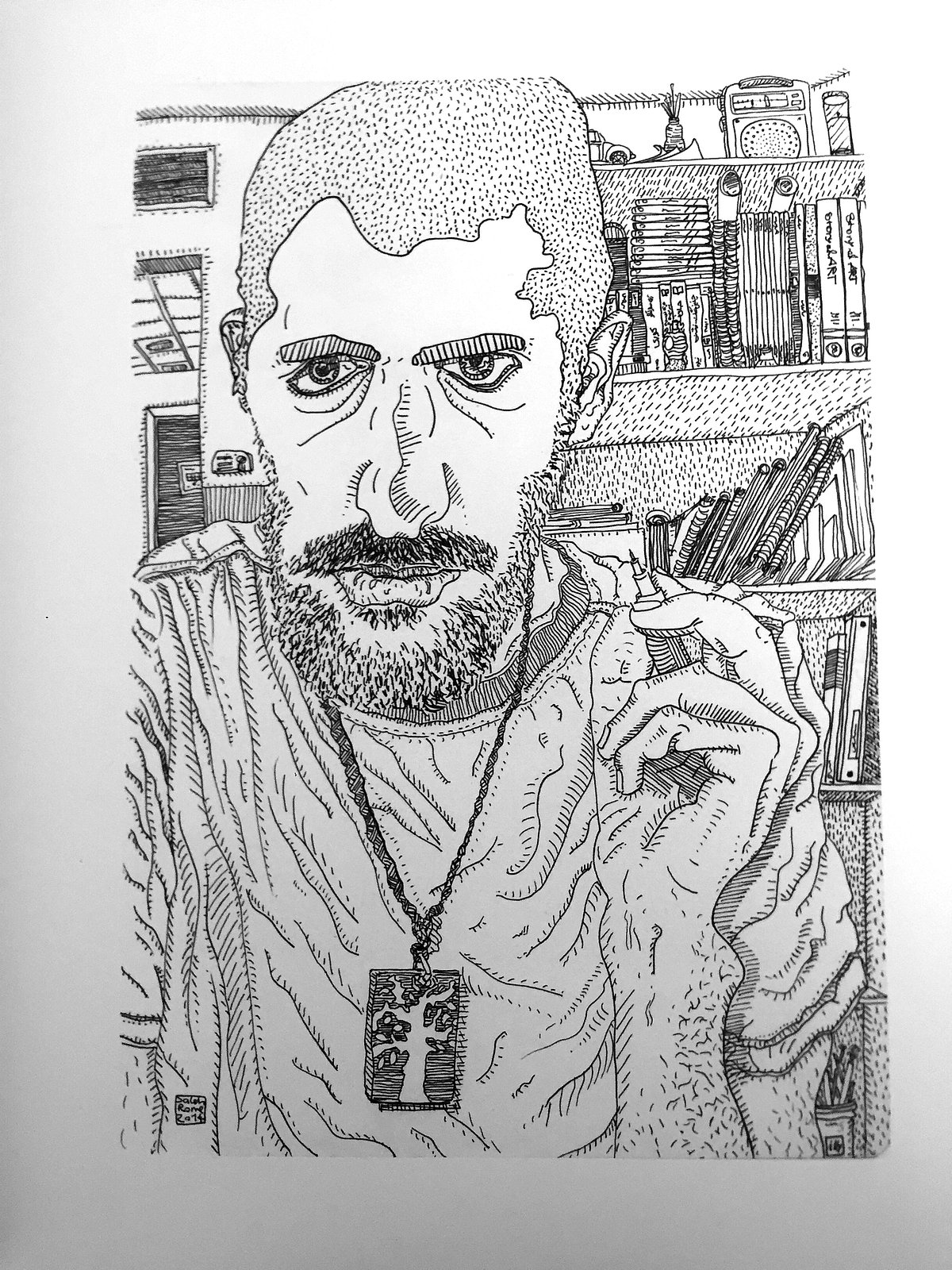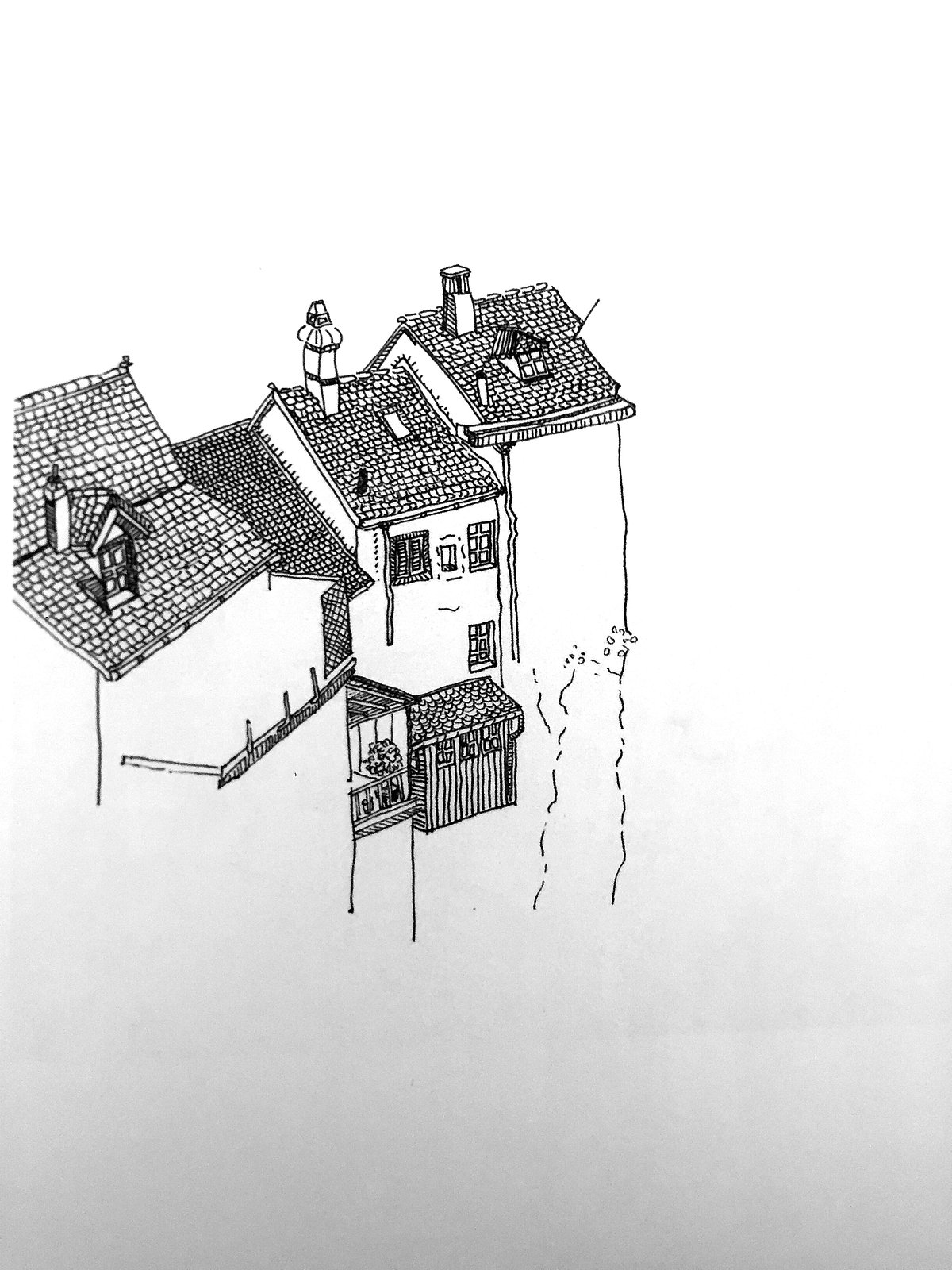An Iranian artist’s impressions of everyday life in Goa
Iranian artist Saleh Kazemi walked around the old town, crowded markets and unnamed lanes in Goa to sketch his impressions of people and life in motion

Rome. March 16, 2014. A tall, willowy young Iranian with long hair and gimlet eyes was walking towards the Fine Arts Academy of Rome. His pace was hastened and his mind addled with vignettes from his sketch books. He had to reach the Academy in time for a Master’s degree examination. His back was burdened with art. Drawings, photographs, 1TB external hard drive, passport, laptop. Everything stashed in a backpack. Suddenly, fate intervened. Like a rogue. In a cruel split second, another man stole the backpack. In that one moment of March 16, 2014, Saleh Kazemi lost everything. He was left with nothing. No passport. No sketchbook. Nothing to show his professors waiting to test his art dexterity.
That day Saleh Kazemi shaved off his long hair, returned to his room, drew himself in blank ink and thanked the moment. It could have been worse, he thought. That day/moment/thought changed him. Forever. Three years later in another day in March, I was sitting with the tall, willowy Iranian artist who was getting ready for Mirror of Everyday Life, an exhibition of his Goan drawings in Museum of Goa. For nearly three months, he walked around old towns, crowded markets, unnamed lanes to find faces and emotions he could draw. In the 70 Goan drawings, there are more women. Nameless everyday women. Not men. “There’s so much iconic Indian-ness in women that I did not find in Goan men,” says Kazemi who attributes his ‘accidental’ Goa-coming to the
invitation of British art collector/connoisseur Jenepher Bramble who calls Goa, London and Rome her home/s.
Sitting cross-legged with a striped sketchbook by his side, Kazemi was chronicling his 25- year life. Born in Tehran, Iran, he arrived in Rome soon after high school because ‘Rome was the easiest, cheapest way to step into Europe’. A six-month course in Italian made the passage easier. As a young lad studying physics and mathematics in high school, he dreamt of being an architect. Instead, in Rome, art called. He enrolled in a course in Graphic Design and picked up photography assignments in Italy, Germany and Switzerland. Kazemi had always ‘drawn’. Even in Tehran, he would sneak into underground art clubs where naked models posed and in the crowded room, Kazemi drew, too.
Drawing, however, was not his dream. Certainly not the abstract of a full-time love/occupation. It happened when he ran out of Persian books to read during train journeys between Germany, Switzerland and Italy for photography assignments. “One day on a train journey between Rome and Milan, I read the last page of the last Persian book I had. I had no more books to read. Nothing else to do. So, I pulled out my sketchbook and started drawing. Then, I drew more. And more. And more. I quit photography, graphic design. Nothing else mattered thereafter. Draw is all I did.” With three exhibitions so far, at 25, Kazemi stores the world - and his own emotions - on handmade paper with 0.05, 0.1, 0.8 black ink pens.
I flip through his heavy catalog, he clicks pages on his laptop and images flit by. Men with gnarled knuckles. Women with wavy hair. Roofs with fishscale tiles. Taut breasts and intertwined bodies in his nude series. Countless self-portraits. Vignettes of waiting at airports and train stations. Random people in cafeterias. And unknown co-passengers on journeys. In the hurried, deliberate strokes of black lines, the striped eyebrows and gnarled knuckles are oft-repeated. Those knuckles remind me of Egon Schiele, the Viennese artist who died 100 years ago. I ask Kazemi whether it is Schiele-inspired. “If I were to pick one artist, it will be Schiele. I have read and reread books on his art, and have spent hours in Vienna’s Leopold Museum staring at his originals,” confesses Kazemi who one day wants to translate books on Schiele into Persian.
The ubiquitous eyebrows? I ask Kazemi. “I always begin my human drawings with the eyebrow. It is always the first thing on paper. It is not a conscious, rational choice. That is how I always begin.” And the deft horizontal stripes filling the arched eyebrows? I ask again. “When I started drawing, the lines were outside of the form but gradually, I started including them in the human form. I do not use shadows in my drawings, the lines define the depth and the shallowness of what I am trying to portray.” The self-portraits? “I sit in front of the mirror and draw myself. Never when I am happy. There are no happy portraits; they are all laden with soul-search thoughts, moments, ideas, but never happiness.” The mirror is constantly reiterated in the Kazemi’s conversation. Right now, he has a 1x1 metre mirror; one day he wants to live in a house where there are at least two large mirrored walls.
Mirrored walls enchant Kazemi but the idea of a permanent home frightens him. “I do not have a home right now. All my worldly belongings fit in a suitcase. I do not know where I will go after my exhibition ends on March 29. I have a list of 20 countries where I want to live for a year each,” says Kazemi who reads poetry and listens to classical music. Hormuz Island in the Persian Gulf is where he one day wants to buy a tiny scrap of land. “Not for old age. There will be no old age for me. I am actually hurrying through life. Egon Schiele died at 28. I might, too. I only have three years left.” Kazemi’s foreboding stumps my questions. But he smiles knowingly, packs his drawings into the backpack and walks away.
I stare at his self-portrait dated March 16, 2014. The day Kazemi lost everything and drew himself. His pate freshly shaved, his eyebrows striped and a rectangular pendant dangling on his chest. That day Saleh Kazemi picked up the lightness of Being and the profundity that there is no beginning or end.
Saleh Kazemi’s exhibition Mirror of Everyday Life is on display at Museum of Goa until March 29, 2018
Follow us on: Facebook, Twitter, Google News, Instagram
Join our official telegram channel (@nationalherald) and stay updated with the latest headlines



